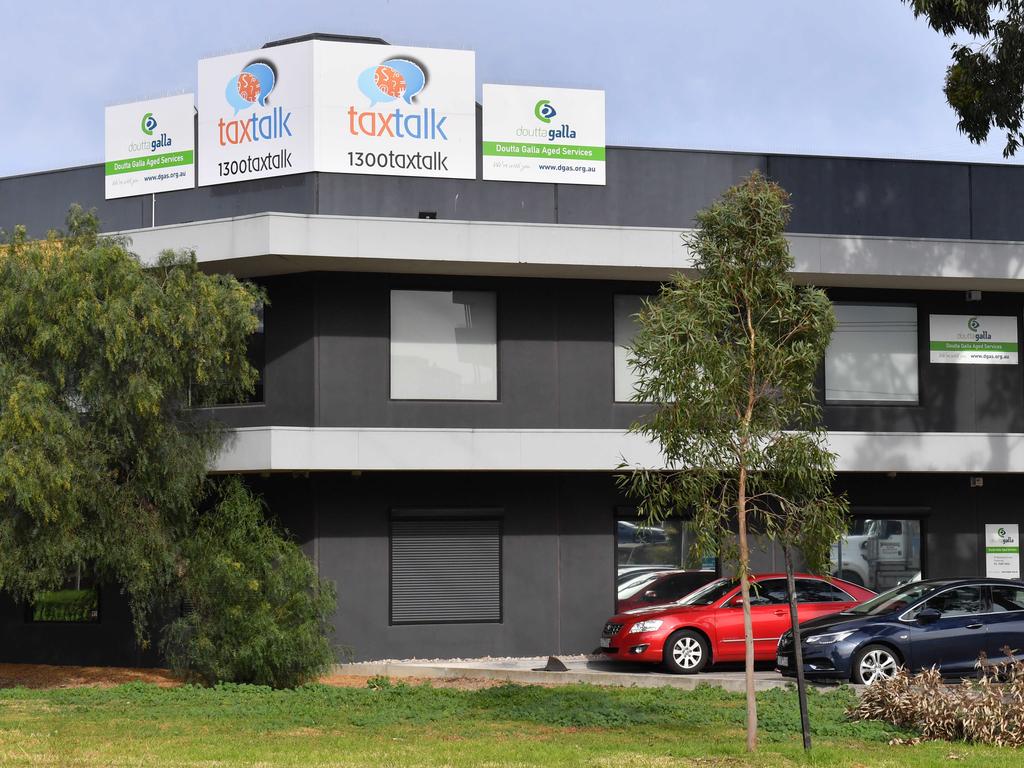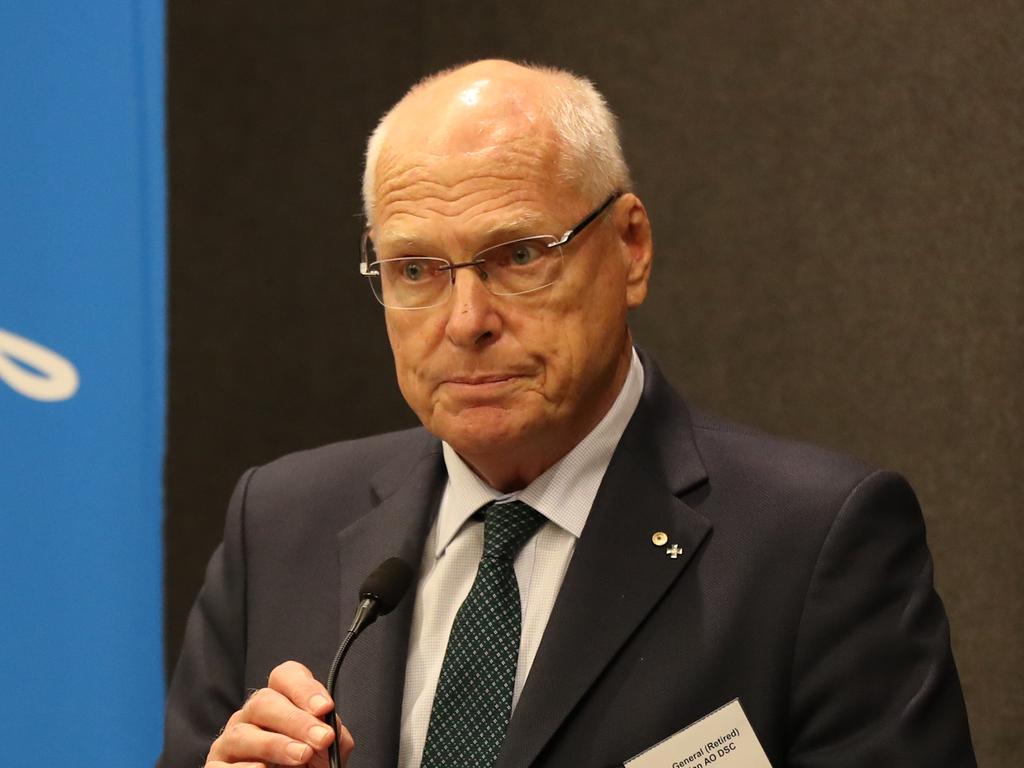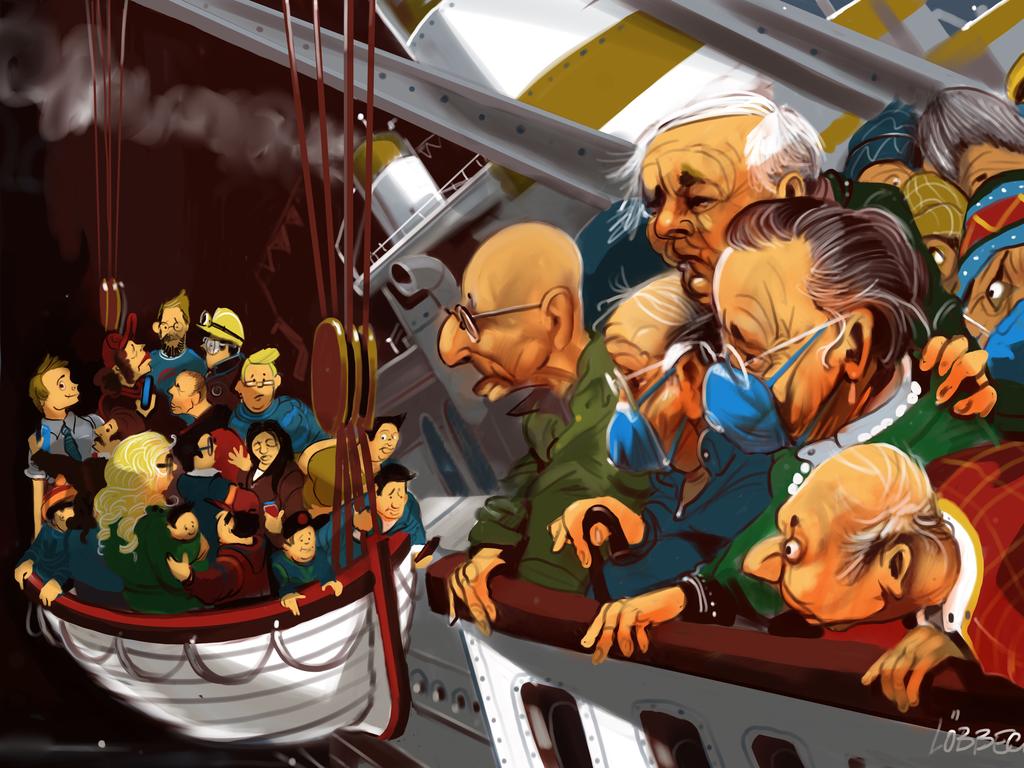Coronavirus: Old or young – every life has a different value and we accept that


This reckoning should not be downplayed as negative or unfair criticism of governments forced to fly in the dark, hampered by incomplete modelling, hamstrung by medical experts who are all trained, and paid, to expect the worst, and hindered by their political aversion to risk.
This should be about constructive learning, gathering information, comparing real outcomes to the modelling and the experts’ advice, and doing a rigorous cost-benefit analysis of responses. We might learn we need a precautionary principle to the precautionary principle because overreactions are not usually cost-free.
But a few straw men must be dismantled first. Some say we should put people ahead of economics. Scott Morrison says every Australian matters. Some say it is wrong to ignore the old.
If only dealing with COVID-19, not to mention settling on many other policies, were that simple.
Choices we make are never between a person, or people generally, and the economy. As rich and fortunate as we are, the starting point in Australia is still that resources are limited. That is the case whether we are talking about taxpayer dollars in federal coffers used by government for the people, the supply of livers, hearts and lungs for patients on a transplant list, or the availability of ventilators to coronavirus victims. When resources are limited, they must be rationed.
Governments and policymakers are confronted by tough questions every day about where to spend money. Safer roads will mean money taken from some other area. More money put into prostate cancer for men may mean less money for breast cancer. This is the reality that confounds those who say that we must put people ahead of economics.
No one is saying we should ignore the old either. However, the doctors I have spoken to, many who have worked for more than 30 years in Australia’s best teaching hospitals, acknowledge they make decisions every week about older patients that they don’t have to make about younger ones. Age, unfortunately, is inevitably a determinant in health decisions. As one senior anaesthetist told me last weekend: “These decisions are often shrouded in secrecy, but we don’t have unlimited resources to treat everyone to the maximum.”
The committed Catholic accepts that sometimes he has to make difficult decisions. This is not something he or his colleagues are comfortable with. But reality cannot be wished away by saying that all lives matter. They do. Life is precious. But no life is priceless. Lives are priceless only in a fictional place called La La Land where resources are infinite.
Another doctor pointed to the decision-making infrastructure purposely built to determine who gets a set of lungs or a heart transplant. These are dreadfully difficult decisions about who will live and who might die, given the demand for organ transplants exceeds supply. And when allocating scarce resources, the age of a patient is relevant because doctors are asked, among many other things, to decide who will get more years of life from a new set of lungs or a new heart.

Measuring the responses to COVID-19 raises similarly confronting issues that many prefer not to think about. Obscuring the difficulty of these issues with simplistic sound bites such as putting people ahead of the economy is unhelpful at best and dishonest at worst.
The Department of Prime Minister and Cabinet already has a document that many will find confronting. It is called the Best Practice Regulation Guidance Note: Value of Statistical Life. The note “provides guidance on how officers preparing the cost-benefit analysis in regulation impact statements should treat the benefits of regulation designed to reduce the risk of physical harm”.
The concept of “the value of statistical life” is an estimate of the value society places on reducing the risk of dying. The modelling starts with a young adult with 40 years of life ahead and uses a related concept called the “value of a statistical life year”, which is an estimate of the worth society places on a year of life. Drawing on research in 2007, and updating in 2019 dollars, the August 2019 Guidance Note suggests the value of saving the life of someone who has 40 years of life ahead is $4.9m, and a value of a statistical life year is $213,000.
The note draws on work that argues these estimates will vary according to the characteristics of people affected and the nature of the risk or hazard: “For example, society may be willing to forgo more to prevent the death of a young person, or to avoid conditions that significantly reduce the quality of life.”
The point of the Guidance Note is to make clear that these key concepts, though highly contestable, should be one input into assessing proposed regulations. In other words, comparing the statistical value of lives saved and the costs of implementing the regulation. Given that decisions to deal with COVID-19 needed to be made quickly, the Prime Minister granted an exemption from the usual regulatory impact statement and this kind of analysis. But after the pandemic has passed, we need a hard-headed and rational analysis of the responses to COVID-19. Indeed, the Morrison government has already committed to a post-implementation review within two years to assess its decisions.
It will have to include many tricky and tough questions. How many lives were saved? What was the average age of death from COVID-19 (not with COVID-19) compared with the average mortality rate in normal periods? How did deaths from COVID-19 compare with an awful flu season that kills young people too? How many people died from other medical conditions that were not treated because of the lockdown? How many additional suicides or cases of domestic violence were caused by the lockdown? Did more children drop out of school when schools were closed?

How much money did governments spend dealing with COVID-19 and how many businesses were brought asunder by the lockdown?
What other financial impacts arose from locking down the economy?
Could older Australians, who are most vulnerable to COVID-19, have been protected with different responses that carried fewer costs? In other words, could we have handled this crisis differently?
Only by providing answers to very tough questions will future governments have more complete information at their fingertips the next time a pandemic threatens.
This is not an immoral endeavour. It is not even a utilitarian one. It is simply one driven by realism and honesty about the imperfect world in which we live. The worst outcome would be to blindly assume that governments performed so terrifically that an investigation into this pandemic, not just its origins, but its handling by governments, is not needed.







When the pandemic has passed, there will need to be a reckoning of responses by state and federal governments. The reckoning should focus in particular on the costs incurred and the benefits accrued from the Morrison government’s decisions, how and when they responded to the health crisis, the costs of lockdown, and when and how they unlocked the economy.